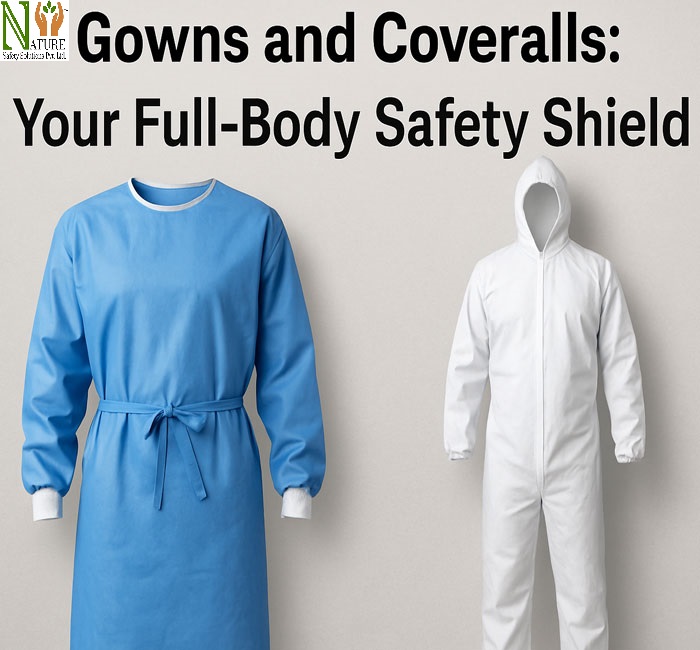When working in hazardous environments, protection is not just about gloves and masks – it’s about safeguarding the entire body. Gowns and coveralls are essential components of a PPE (Personal Protective Equipment) kit.
They act as a physical barrier, protecting the wearer from infectious agents, chemical splashes, and other harmful substances. Whether in healthcare, manufacturing, or industrial cleaning, these garments are designed to keep workers safe from head to toe.

Purpose of Gowns and Coveralls
The primary purpose of gowns and coveralls is full-body protection. In healthcare, gowns shield healthcare workers from blood, bodily fluids, and infectious droplets. In industrial settings, coveralls protect against chemical splashes, dust, and debris. By covering large areas of skin and clothing, these garments reduce the risk of contamination, ensuring the wearer’s safety in high-risk environments.
Difference Between Gowns and Coveralls
While both offer body protection, their design and usage vary.
Gowns are typically open at the back and secured with ties, allowing easier removal and disposal. They are commonly used in hospitals and clinics.
Coveralls, on the other hand, provide 360-degree coverage, including the back, arms, and legs, often with a zippered front. This makes them ideal for high-hazard situations such as industrial work, chemical handling, or dealing with airborne contaminants.
Materials and Protection Levels
Gowns and coveralls are made from different materials depending on the level of protection required. Common materials include:
- Polypropylene – lightweight and breathable for low-risk tasks.
- Polyethylene-coated fabrics – resistant to liquids and splashes.
- SMS (Spunbond-Meltblown-Spunbond) fabric – offers a balance of comfort, breathability, and fluid resistance.
- The choice of material depends on the hazard—infectious diseases, chemicals, or fine dust particles.
Proper Use and Disposal
For these garments to be effective, they must be worn and removed correctly.
- Wearing – Ensure full coverage, securing all openings to avoid exposure.
- Removing – Avoid touching the outer surface. Remove carefully to prevent contaminating your clothes or skin.
- Disposal – Always dispose of single-use gowns and coveralls in designated biohazard or waste bins. Reusable types must be properly laundered or disinfected.
History and Evolution
Protective clothing dates back centuries, but the modern medical gown was widely introduced in the early 20th century during outbreaks of infectious diseases. Coveralls gained popularity in industrial work in the mid-1900s, especially during the chemical industry boom. Advances in materials and design have made them lighter, more breathable, and more resistant to hazards over time.
Also read:-
- Step Into Safety: The Role of Shoe Covers in PPE Kits
- Understanding PPE Masks and Respirators for Maximum Safety
- Complete Guide to PPE Kit Head Covers: Uses, Benefits, and Types
- PPE Kit Face Shield or Goggles: Essential Eye and Face Protection
- OSHA’s New PPE Requirements for Construction: What You Need to Know Now
